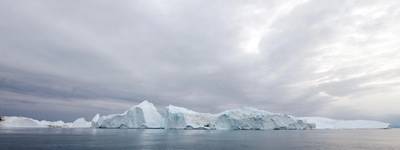Norway Bets on Global Warming in Arctic Oil and Gas Drive
Norway wants to let oil and gas companies drill in Arctic seas that were frozen as recently as the 1980s even though some climate experts say it is too early to trust global warming to keep the ice away.
Russia is also showing new interest in the Arctic despite high costs in a region where governments are struggling to set safety rules after BP's 2010 blowout in the Gulf of Mexico, the worst offshore spill in U.S. history.
Many companies, including ConocoPhillips and Idemitsu, are applauding a plan by Norway to open the South East Barents Sea - about 1,800 kms (1,100 miles) from the North Pole - to exploration as climate change thaws the Arctic.
"For Norway to continue to be a long-term reliable supplier of oil and gas it is important to explore for, and develop" expected large resources in the Barents, deputy oil and energy minister Kåre Fostervold told Reuters.
Environmentalists and some scientists say the South East Barents, the first new area opened off Norway since 1994, is risky even though it has been ice free year-round for a decade.
The state-funded Norwegian Polar Institute is advising the Conservative-led government against opening some blocks, saying sea ice smothered parts of the area in winter as recently as the 1980s and could strike back despite climate change.
"In accordance with international standards we've chosen 30 years" as the benchmark to judge global warming trends, Jan-Gunnar Winther, head of the Institute, told Reuters.
Environmental groups including Greenpeace and the WWF say an oil spill near ice would be almost impossible to clean up and could damage fish stocks.
Norway, the world's number seven oil exporter which pumps about 1.5 million barrels per day, will make a final decision on which blocks to open later this year.
The chill between many European countries and Moscow over Ukraine may make Norway's gas attractive as an alternative to Russian supplies. Still, Fostervold said it would take until the mid-2020s at the earliest to develop any big fields.
Norway estimates the Barents Sea, a vast area where Statoil already runs the Snoehvit gas field, contains 3.8 billion barrels of oil and 1.06 trillion cubic metres of gas.
Northern Limit
Under rules set by Norway's parliament for the oil industry's northern limit, drilling will not be allowed in areas less than 50 kms (31 miles) from the edge of any sea ice.
Arctic sea ice shrank to the smallest on record in the summer of 2012, a trend linked by a U.N. panel of experts to greenhouse gas emissions from burning fossil fuels.
The Barents Sea, also kept warm by the tail of the Gulf Stream, is exceptionally accessible to be part of the Arctic. Winter ice grips seas off Greenland and north of Alaska, Canada and Russia and is discouraging interest in most nations.
"Apart from Russia, there is more caution about the Arctic," said Heather Conley of the U.S. Center for Strategic and International Studies, saying that high costs and the U.S. shale gas boom have also dimmed interest.
Russian President Vladimir Putin said last month that Russia should step up its presence in the Arctic.
Russia loaded its first crude tanker from the ice-resistant Prirazlomnaya platform in the Pechora Sea last month. Exxon Mobil is cooperating with Rosneft to drill in the Kara Sea north of Russia this year.
The Norwegian Arctic is an attractive testing ground for subsea equipment makers - installations on the surface require expensive technology to cope with Arctic cold.
"The water doesn't freeze at the seabed. The reservoir conditions have more of an impact than the above surface temperatures," said Knut Røsjorde, head of subsea operations in Norway for Aker Solutions.
Norway's northwards push to remote waters will strain a demand that oil firms must be able to start drilling a relief well, the standard way of ending a blowout, within 12 days.
Officials say the deadline can be met in Arctic areas if oil firms cooperate, for instance ensuring that two rigs drilling in nearby blocks will help out if one suffers a blowout.
Elsewhere, there are also uncertainties about the rules.
In Canada, for instance, Chevron and Exxon Mobil Corp's majority-owned Imperial Oil wrote this month to urge safety authorities to revise a demand for oil companies to be able to drill a relief well in the same season - before ice and winter darkness close in.
"A same season relief well is not feasible in the Arctic because of the short drilling season," Exxon spokesman Patrick McGinn said of areas where seas freeze. Well design, equipment and staff could give similar and sometimes better protection.
But Marilyn Heiman, Arctic director of the U.S.-based Pew Charitable Trusts, said a same season relief well should be part of all safety planning in the Arctic. That also means that any drilling needs to finish long before ice re-freezes.
(By Alister Doyle, Environment Correspondent, Editing by David Evans)










